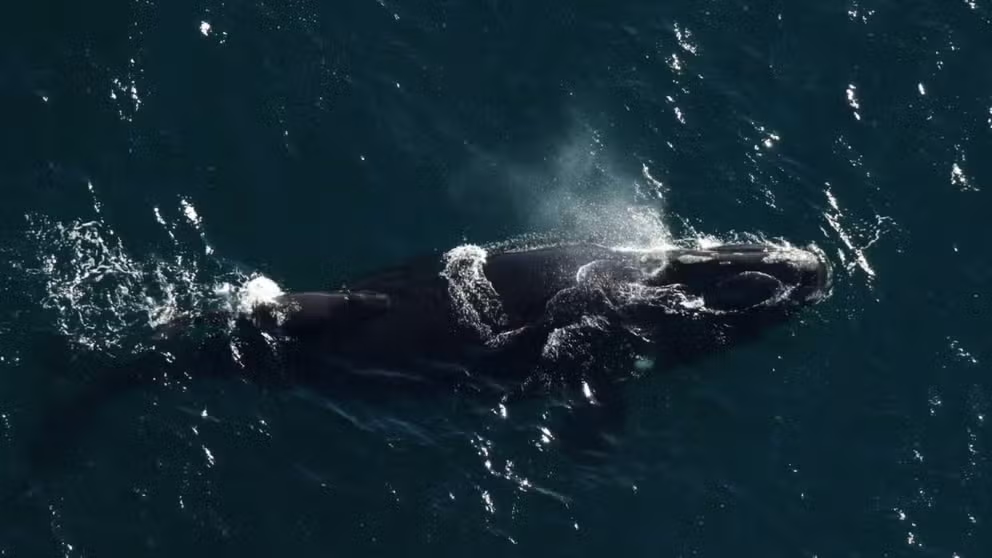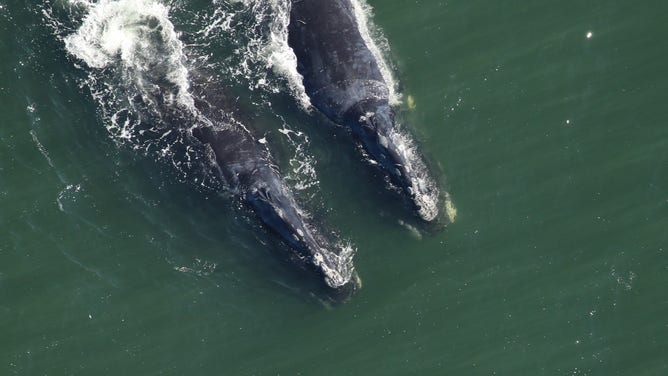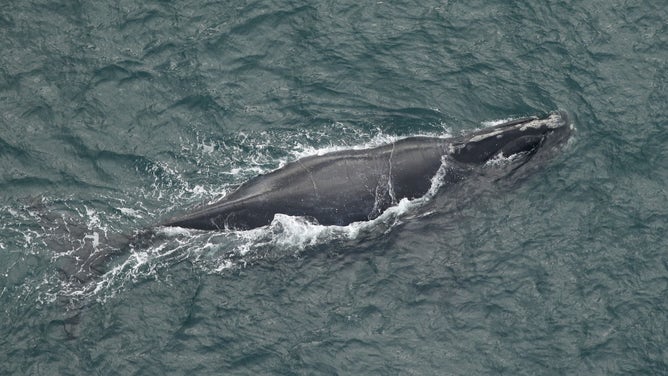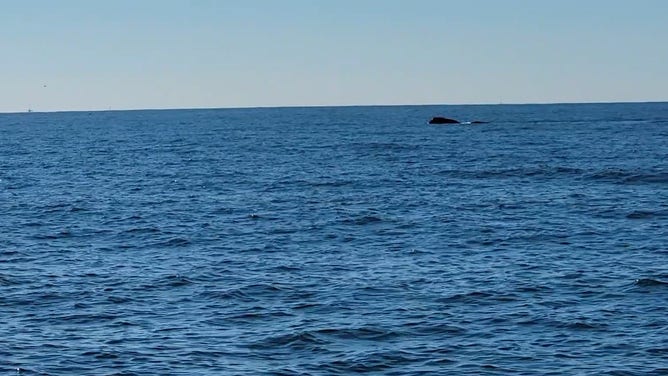First right whale calf of season spotted off Southeast coast
NOAA Fisheries reports there are only around 370 North Atlantic right whales left in existence. Since 2017, the species has been experiencing an Unusual Mortality Event, with the mammals dying faster than they can reproduce. Marine biologists estimate the species needs to produce 50 or more calves a year to stop the decline of the population.
Right whale calves spotted off the Florida coast
NOAA Fisheries reports there are only around 360 North Atlantic right whales left in existence. Two new calves were recently spotted off the Florida coast.
CAPE ROMAIN, S.C. – Witness accounts from boaters off the coast of the Carolinas indicate a possible promising sign for the critically endangered North Atlantic right whale population as three potential mothers and a calf were recently spotted.
The Florida Fish and Wildlife Conservation Commission said the first calf sighting occurred on Nov. 24 when a boater off Cape Romain, South Carolina, reported seeing a mother with an infant.
Marine biologists said they have been unable to determine the health status of the juvenile or identify the mother to which the whale belongs but are actively monitoring the waters off the Southeast coast.
The marine animals spend most of their time off the coast of Canada and the Northeast in the western Atlantic before migrating around 1,000 miles southward for the calving season.
The season typically runs from mid-November to mid-April, when sightings of mothers with their calves are most common along the coasts of Florida, Georgia, South Carolina and North Carolina.
FLORIDA IDENTIFIES NEXT INVASIVE SPECIES THREAT
NOAA Fisheries estimates there are only around 370 North Atlantic right whales left in existence – down from a peak of around 20,000 during the late 1800s.
Since 2017, the whales have been experiencing an Unusual Mortality Event (UME), which has caused dozens to become sick, injured or ultimately pass away.
Every female North Atlantic right whale and calf is considered to be vital to the recovery of this endangered species.
Marine biologists contend that since the population is dying faster than they can reproduce, the species needs to yield 50 or more calves a year to stop the decline.
NOAA Fisheries has long proposed expanding speed limits in coastal waters for vessels to reduce collisions, but efforts have faced headwinds in Congress.
"While entanglements remain the leading cause of death and injury, this year [2024] there were at least six vessel strike-related injuries/deaths, highlighting the importance of addressing this issue soon. The persistent aggregation of more than 50 right whales in the New York shipping lane this summer underscores this even further," Heather Pettis, a research scientist at the Anderson Cabot Center and the chair of the North Atlantic Right Whale Consortium, said in a statement.
NOAA said it recently received $82 million in funding through the Inflation Reduction Act to invest in solutions and address the threats facing the species.
To report a right whale sighting from North Carolina to Florida, call the volunteer sighting network at 888-979-4253 or the NOAA Fisheries hotline at 877-942-5343.
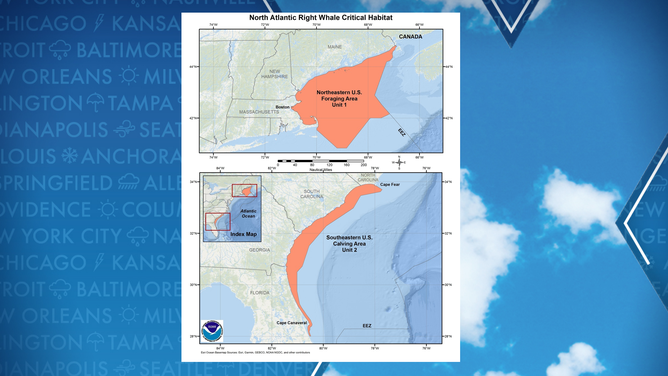
North Atlantic right whale critical habitat map
(NOAA)
